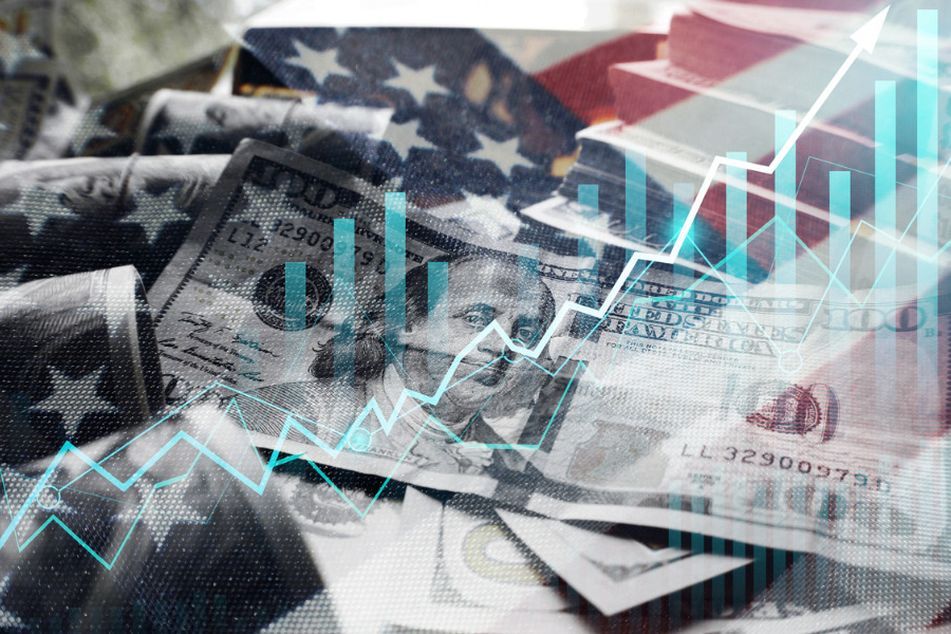US economy fueled by consumer optimism

GDP stats due Thursday likely to beat expectations.
Forecasters who follow the US economy found themselves in a familiar place after a recent retail sales report: revising up their estimates for GDP.
Quarterly data on gross domestic product due Thursday from the Bureau of Economic Analysis is expected to show the economy expanded at a 2% annual rate in the final three months of 2023, fueled by 2.5% growth in household spending.
That’s stronger growth and spending than most economists anticipated when the quarter began, and would follow a string of upside surprises throughout the past year that spoiled widespread predictions for a recession. Now, with inflation receding fast, many see potential for the US consumer to continue carrying the economy in 2024 as well.
“Inflation is slowing relatively quickly. Labor markets are slowing, but they’re not slowing as quickly. The net effect of that is going to continue to juice real incomes,” said Neil Dutta, the head of economics at Renaissance Macro Research. “It’s not an economy firing on all cylinders, but it’s an economy firing on enough cylinders.”
Another year of solid growth would likely cement the elusive “soft landing” sought by Federal Reserve officials, whereby their policy actions return inflation to the central bank’s 2% target without sparking an economic downturn.
At the beginning of 2023, most analysts saw such an outcome as unlikely. But inflation’s swift retreat in recent months has changed the narrative. By some measures it’s already settled in near the Fed’s goal, and economists such as Dutta see that moderation in price pressures “effectively acting as a tax cut for the consumer” headed into the new year.
Surveys of household sentiment suggest it’s already having an impact, with Conference Board and the University of Michigan gauges both improving at the end of last year. Michigan’s latest reading showed confidence continued to build in early January, soaring to the highest level since mid-2021.
That budding optimism can keep the economy on track for further expansion even if the economy doesn’t get much help from other sources of growth like business investment, homebuilding or foreign trade. And they might not. Weak overseas demand should keep a lid on manufacturing output, while somewhat lower interest rates will probably provide only a limited boost to housing.
While lower inflation is starting to bear fruit, ongoing strength in the labor market will also be a critical component of the consumer-centric outlook for 2024. Weekly filings for unemployment insurance remain low, suggesting companies are retaining staff. Hiring, however, has been slowing.
“That’s the trillion-dollar question: What happens to payrolls? You read a lot of reports that the hiring rate is declining and it’s getting harder to find a job, but the jobs are still there,” said Yelena Shulyatyeva, senior US economist at BNP Paribas.
WHAT BLOOMBERG ECONOMICS SAYS…
“Our forecast implies brisk 2.7% growth for full-year 2023 GDP, up from 0.7% in 2022. But we think growth will slow meaningfully in the first half of this year given fast labor-market cooling and concerns about credit availability and the sustainability of consumer demand.”
— Anna Wong, Stuart Paul, Eliza Winger and Estelle Ou
To read the full note, click here
The combination of receding inflation and gradual softening in the job market has investors betting the Fed will begin cutting interest rates as soon as March, with futures indicating about 1.4 percentage points of reductions for the year as a whole.
Lower borrowing costs should support residential investment. In last year’s third quarter, homebuilding finally contributed to GDP after subtracting for nine straight quarters. Still, the risk is that any lift will be tempered by a lack of affordable housing, according to Beth Ann Bovino, chief economist at US Bank.
“Because the housing market is so tight, prices haven’t really come down dramatically, and that squeezes people out of the market,” Bovino said.
LINGERING CONCERNS
Corporate investment may also remain muted. Businesses are facing a litany of concerns amid weak foreign growth, uncertainty ahead of elections in November and questions about the sustainability of domestic demand.
Even so, early indications from the latest earnings reporting season now underway suggest consumers remain resilient. Andre Schulten, the chief financial officer of household-products giant Procter & Gamble, told analysts Tuesday after the company’s earnings results that “the US continues to be very solid, continues to impress.”
Combined spending by households and governments should continue to offset lackluster investment figures, said Steven Ricchiuto, the chief US economist at Mizuho Securities USA.
“The consumer continues to spend enough with a little bit of government spending coming in, very little inventory being accumulated, very little boost coming from trade, no plus-or-minus from residential or commercial real estate, no real corporate investment expenditures on equipment,” Ricchiuto said.
“It’s up to the consumer and the government. Between the two of them, they can get you 2% growth on average.”
Learn more about reprints and licensing for this article.








